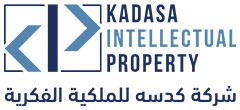What is an Industrial Design
Industrial Design is a form of intellectual property that is used to protect aesthetic, ornamental and/or ergonomic aspects of an article.
This may include any two or three dimensional features such as:
- Shape of an article
- Patterns
- Lines
- Colors etc.
- In countries like US, it is also referred to as “Design Patents”
Industrial Design versus Patents
- It should be noted that functional aspects are not protected through Industrial Designs
- Functional aspects are protected as patents, while ornamental, aesthetic and/or ergonomic aspects are protected as Industrial Designs
- Industrial Design is where form meets function of a product
- For more details on patents, please see Patents Filing & Prosecution section

Types of Products
- Industrial designs are applicable to any products from any industry, including handicrafts
- This ranges from beverage containers to automobiles, household goods, jewelry, articles of clothing, and so on
- Some countries allow the protection of graphic symbols and graphical user interfaces as industrial designs.
Rights Offered
A registered industrial design provides the owner the right to prevent third parties from:
- making,
- selling or
- importing articles
Bearing or embodying a design which is a copy, or substantially a copy, of the protected design, when such acts are undertaken for commercial purposes
Requirements of an Industrial Design Application
- A typical Design application would include images of appropriate views of the product that clearly provides a view of the relevant features of the product that differentiates it from other similar products
- As many views as possible can be filed
- Some countries restrict the number of images, e.g. Saudi Authority for Intellectual Property allows only 7 images for each Design application
Images in Industrial Design Applications
- When filing an industrial design application, visual representations of the product are critical. These images or drawings define the scope of legal protection, as design rights typically protect the visual appearance of a product rather than its function or construction
- Images are the heart of a design application. The strength and clarity of your visual submission determine how well your design is protected and enforced globally. It’s essential to tailor your image submission to the rules of each jurisdiction where protection is sought
Types of Views Commonly Used
- Perspective View
- Front View
- Back View
- Top View
- Bottom View
- Left Side View
- Right Side View
- Optional:
- Color Renderings (if colour is claimed as part of the design)
